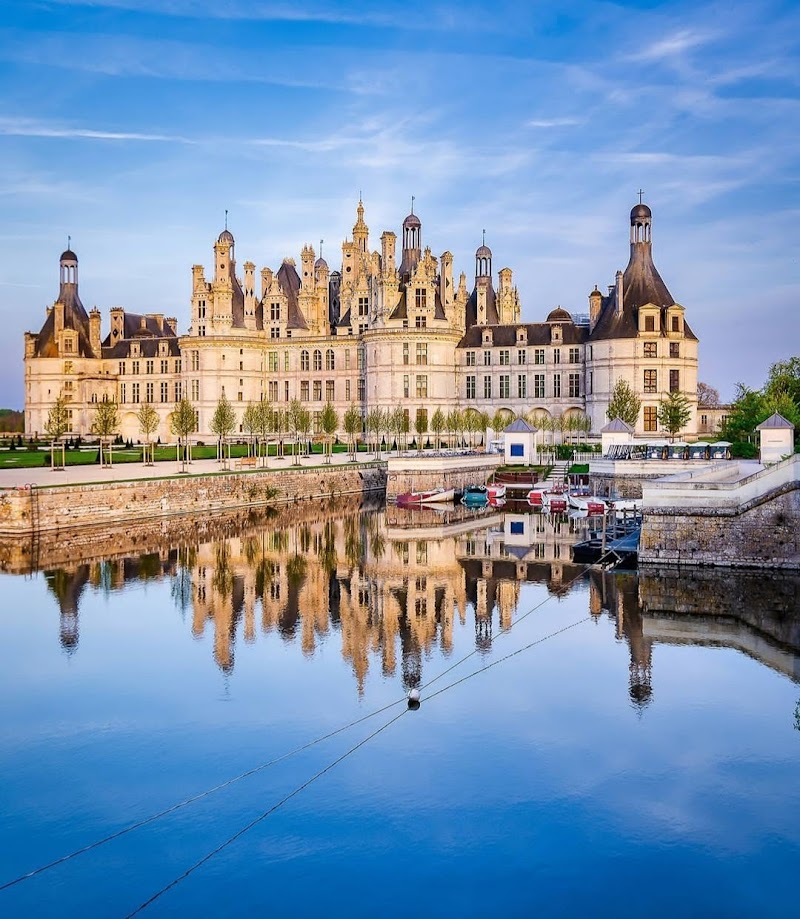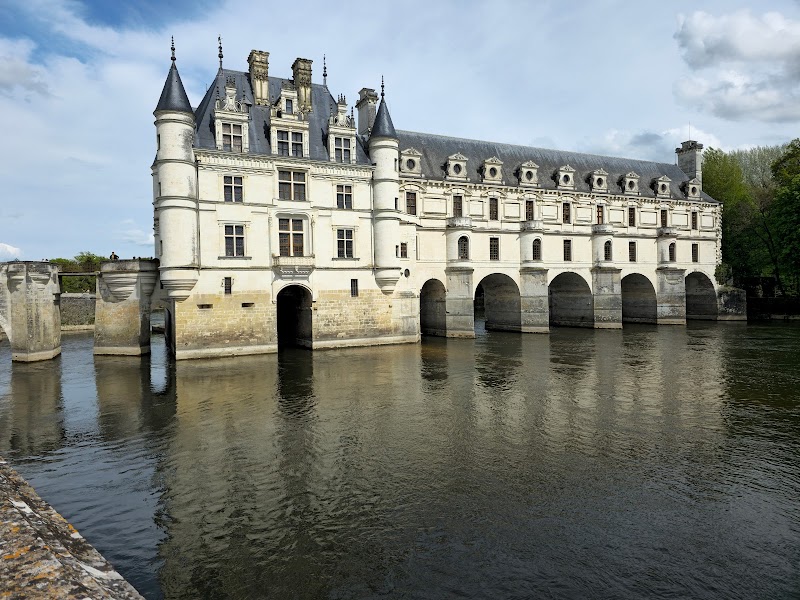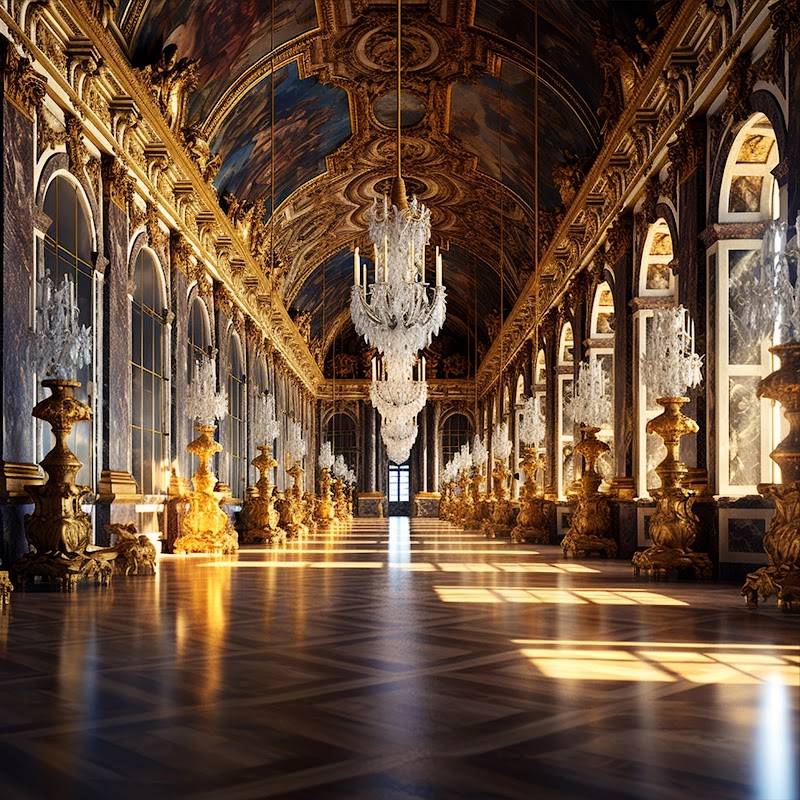Embark on a Timeless Adventure with the Tourist Map of Castle Route, France
Have you ever imagined stepping into a fairy-tale-like setting with over 40,000 châteaux, including the grand Château de Chambord, the romantic Château de Chenonceau, and the charming Château de Chantilly along the scenic Castle Route of France? A journey that takes you back in time, the Castle Route unravels the rich essence of France's history and culture. To enhance your experience, a comprehensive tourist map can act as a personal guide, introducing you to the main attractions and hidden gems alike.
Booking.comUnearth Hidden Treasures on the Castle Route, France
No adventure on the Castle Route is complete without unveiling the unseen. Each château, steeped in unique charm, history, and grandeur, has a story to share. While popular castles are must-visits, the heart of France is also home to unexplored treasures that hold an equally mesmerizing charm. This tourist guide map of the Loire Valley can be your companion in uncovering these lesser-known gems.
Hidden Wonders of the Castle Route
Set on a journey off the beaten path to discover the unseen castles. Offering an authentic experience, these hidden gems often overlooked by tourists, are worth exploring. Here's a peek into the magnificent world of these unexplored castles.
Château de Villandry
Renowned for its mesmerizing gardens, Château de Villandry is a sight to behold. Its beautifully manicured gardens, divided into four unique areas - the ornamental garden, the water garden, the kitchen garden, and the sun garden, reflect the high aesthetic standards of the Renaissance era.
Château de Brissac
Standing tall in the picturesque Loire Valley, Château de Brissac is France's tallest castle. Boasting seven storeys, this castle provides a breathtaking panorama of the surrounding vineyards and the River Aubance. Revered as the "Giant of the Loire Valley," the castle radiates charm with its beautifully adorned rooms, stunning tapestries, and intriguing secret passages.
Château de Pierrefonds
Located in the serene forest of Compiègne, the majestic Château de Pierrefonds is an architectural beauty that transports you to the Middle Ages. This fortified castle, a perfect example of 14th-century defensive architecture, features drawbridges, watchtowers, and an imposing keep. The castle gained more fame for its association with the popular BBC series 'Merlin'.
Experience the Castle Route through a Historical Lens
The Castle Route offers more than just exploration of castles; it's a deep dive into the history, culture, and picturesque landscapes of France. Every castle reveals a tale of the past, offers a glimpse into French culture, and showcases stunning landscapes that will leave you spellbound.
A Journey Through History
Every castle on the route is a living testament to France's rich history. From medieval fortresses to Renaissance châteaux, they reveal the rich tapestry of France's past. Visiting these castles is akin to flipping through history books, where every brick has a story to share.
Immerse in French Culture
The Castle Route is also a journey through the rich culture and traditions of France. From royal festivities to village life, the castles offer insights into the French way of life. Be it tapestries narrating historical events or gardens designed following Renaissance aesthetics; you can taste French culture at every turn.
Cherish Natural Beauty
The Castle Route isn't just about man-made wonders; it's also about the natural beauty surrounding these castles. Set amid vineyards, forests, and rivers, these castles offer breathtaking views that add to the charm of the Castle Route. The scenic landscapes, paired with the elegance of the castles, create a postcard-perfect view that stays with you long after your trip ends.
Planning a trip to the Castle Route can seem daunting, given the sheer number of castles and the distances between. To make your planning more manageable, consider using a tourist map of France that outlines the castles and provides a clear route. And, for those looking to explore even more scenic beauty, consider a detour to the picturesque region of Alsace. With the right planning, your Castle Route journey will become a memorable chapter in your travel story.

Practical Information for the Castle Route, France
Transportation and Mobility
Getting around the Castle Route is made easy with France's efficient transportation system that offers various convenient options. The well-connected French rail network enables you to reach most castles by train. For a more flexible itinerary, consider renting a car, which offers greater freedom to explore lesser-known castles. Cycling is also popular, especially in the Loire Valley, where well-marked cycling routes lead to several castles.
Schedules and Prices
Each castle operates on its own schedule and has its own admission fees. Most castles are open from 9:00 AM to 5:00 PM, extending hours in the summer. Prices range from €10 to €15 for adults, with discounts often available for students, seniors, and children. Additional tours or experiences, like at the Château de Chambord, may be available at a higher price. Always check the official websites for the most accurate and updated information.
Safety Tips
France is generally safe for travelers, but taking common precautions is still essential. Keep your valuables secure, especially in crowded areas. If you opt to rent a car, ensure it's locked, and never leave belongings visible inside. Cyclists should wear a helmet and use bike lanes when possible. While exploring the castles, always adhere to designated paths and respect safety barriers.
Practical Recommendations
The Castle Route is stunning all year round, but the best times to visit are during spring and early fall when the weather is pleasant and the crowds are thinner. Comfortable footwear is essential for castle tours, as they require a lot of walking. Lastly, carry a water bottle and snacks as facilities may be sparse in some remote castle locations.

Frequently Asked Questions about Castle Route, France
1. What is the best time of year to visit the Castle Route in France?
The Castle Route is a delight to explore year-round. However, spring (April to June) or fall (September to October) are arguably the best times to visit. These seasons offer a balance of pleasant weather and less crowded attractions, adding to the allure of blossoming gardens or autumnal hues.
2. Can I explore the Castle Route in France with a bicycle?
Absolutely! Many travelers embark on a cycling tour of the Castle Route. It's an eco-friendly and intimate way of experiencing the scenic landscapes and majestic châteaux. However, ensure you're physically prepared for the journey, as some routes can be challenging.
3. Is it possible to stay overnight in any of the castles along the Castle Route?
Yes, some châteaux along the Castle Route offer accommodations. Staying overnight in a château provides a unique opportunity to immerse yourself in the grandeur of French history. However, availability and prices vary, so it's advisable to plan and book in advance.
4. Are there any food and wine experiences along the Castle Route?
Yes! The Castle Route not only unveils history and architecture but also indulges you in rich French gastronomy and world-renowned wines. Many castles are situated near vineyards and offer wine tastings, while others have on-site restaurants serving exquisite local cuisine.
5. Are the castles on the Castle Route accessible for people with mobility issues?
Accessibility varies among castles. Some châteaux have made significant efforts to provide access for people with mobility issues, including installing lifts and ramps. However, due to historical preservation, not all areas may be accessible. It's recommended to check specific accessibility information for each castle before your visit.
6. What local customs or etiquette should I be aware of when visiting the castles?
When visiting the châteaux, remember they are often historical and cultural treasures. Respect the rules, such as not touching the artifacts and maintaining a quiet demeanor. Dressing respectfully is also appreciated. Remember, you're not just a tourist, but a guest in these magnificent pieces of French heritage.

